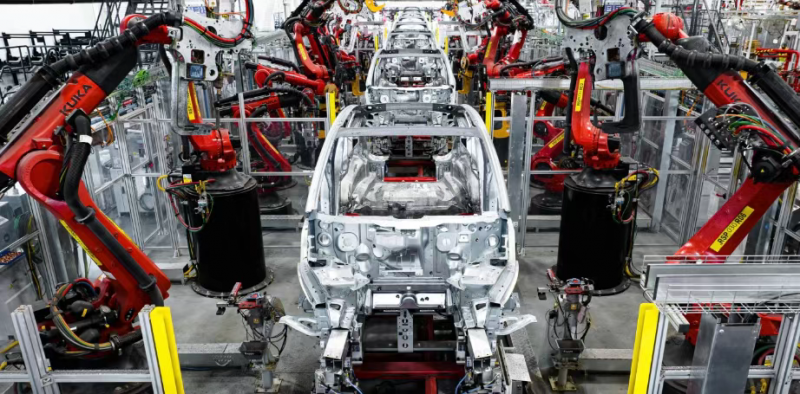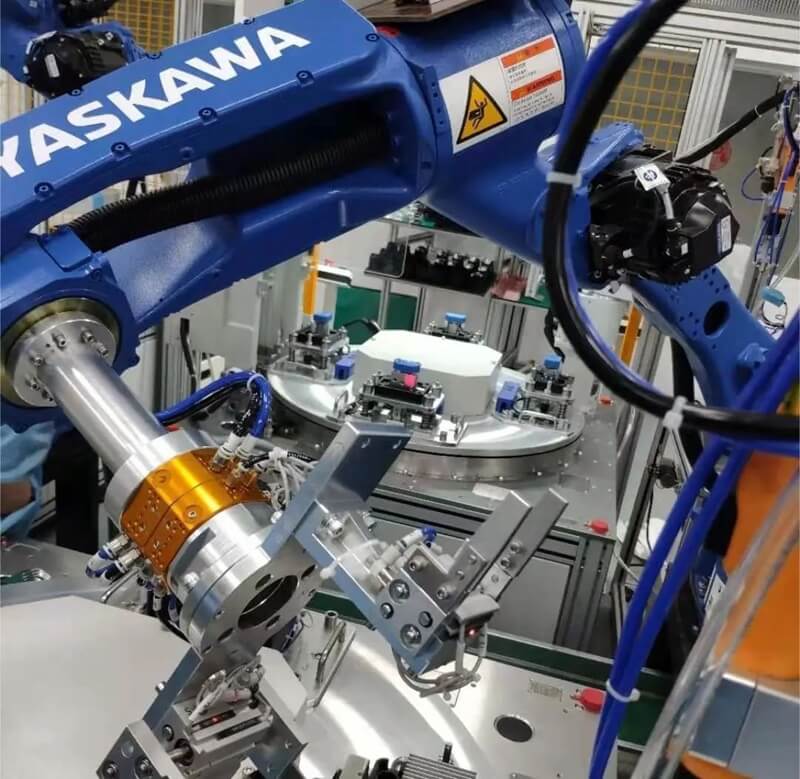Recently, listed companies have successively released their 2022 performance reports. Among them, some companies such as Xinsong Robot have turned losses into gains, while companies like Topstar, Midea Group, and Jiangsu Northpeople have seen year-on-year revenue growth.
In terms of profits, companies such as Xinda, Aifute, Yijiahe, Sanfeng Intelligence, and Tianyong Intelligence are expected to have negative net profits for the year 2022.
On the one hand, the domestic market continues to expand, while on the other hand, there are continuously losing robot companies. Why is the 2022 industrial robot race so polarized?
The industrial robot market remains hot and its scale ranks first in the world
In the past decade, with the widespread application of robots in manufacturing, China’s industrial robot industry has rapidly grown in scale. According to data from the China Robot Industry Alliance, in December 2022, industrial robots produced by enterprises above a certain scale in China reached a production volume of 40,000 units. From January to December 2022, industrial robots produced by enterprises above a certain scale in China reached a cumulative production volume of 443,000 units.
From the perspective of competitive landscape, the COVID-19 pandemic has significantly accelerated the development of domestic brands. In December 2022, the export value of industrial robots in China was USD 50 million, while the import value was USD 180 million, resulting in a trade deficit of USD 130 million. From January to December 2022, the cumulative export value of industrial robot equipment in China was USD 610 million, the cumulative import value was USD 2 billion, and the cumulative trade deficit was USD 1.39 billion.

Over the past decade, China’s high-end equipment manufacturing industry has also made significant progress. During this period, the value added of China’s manufacturing industry has increased from RMB 16.98 trillion to RMB 31.4 trillion, accounting for nearly 30% of the global total and ranking first in the world. Among the 500 major industrial products, China produces more than 40% of them, ranking first in the world in terms of production volume, and the comprehensive strength of the manufacturing industry has been greatly improved.
In recent years, the domestic robot industry has been actively investing and financing, and a preliminary pattern of industry-capital linkage has formed. According to statistics, the financing amount disclosed by China’s robot industry in 2022 has exceeded RMB 30 billion.
Robots and automation have become an indispensable part of modern manufacturing. Manufacturers integrate robot systems in production facilities to increase production capacity, improve profit margins, and reduce operating costs. The automotive industry is a key area of application for industrial robots, and the demand for robot markets will continue to maintain a good trend as the sales growth of new energy vehicles exceeds expectations.
Listed companies in the industrial robot industry have experienced mixed fortunes, with some continuing to report losses
From the performance forecasts released by some loss-making companies, the COVID-19 pandemic in 2022 has affected logistics, market expansion, and employee travel, resulting in limited delivery of ordered products, affecting order amounts. At the same time, the industrial robot industry has a long-term positive outlook, so major companies continue to invest, and overall expenses have not decreased compared with the same period last year, leading to a decline in the overall profitability of companies.
On the other hand, the industrial automation industry has experienced a contraction in demand and a weakening outlook, with some industries experiencing an overall decline. This has resulted in a significant decrease in company revenue, which in turn has led to a decline in profits. Additionally, fluctuations in investment in downstream industries, logistics and transportation limitations both domestically and abroad, have led to rising prices for bulk raw materials, a shortage of electronic components, and increased costs for supply and delivery, which has further increased operating costs. In addition, intensifying competition in the domestic robotics market and cost competition in the overseas integration business have resulted in some companies experiencing a lackluster overall business gross profit margin.

In 2022, some companies have continued to implement their “focus” strategy, strengthening resource allocation and utilization, continually enriching, adjusting, and improving their sales system for their robot business. They have established a matrix-based sales system based on industry applications and based on regional development, with sales expenses for the robot business increasing compared to the same period in 2021. The company’s strategic adjustments and personnel configuration adjustments have also resulted in significant one-time expenditure.
Recently, seventeen departments, including the Ministry of Industry and Information Technology, the Ministry of Education, the Ministry of Public Security, and the Ministry of Housing and Urban-Rural Development, issued the “Robot+” Application Action Implementation Plan, which clearly states that by 2025, the density of manufacturing robots will have doubled compared to 2020, and the depth and breadth of applications in service robots and special robots will have significantly improved. The ability of robots to promote high-quality economic and social development will have also significantly increased. The plan focuses on ten key application areas, breakthroughs in over 100 innovative robotic applications, and solutions to promote over 200 typical robotic application scenarios with high technical levels, innovative application modes, and significant application results. This will help create a group of “Robot+” application benchmarking enterprises and build application experience centers and testing and verification centers. Promote innovation and practice in “Robot+” applications in various industries and regions, and establish international and domestic exchange platforms to create a strong atmosphere for the comprehensive promotion of robot applications.
To promote the development of the “Robot+” industry, some companies are actively expanding into more industries and market businesses, diversifying their product categories, continuing to attract outstanding talent, and strengthening their market and channel development. They have also launched new products in different fields such as the 3D patrol system, the smart shared charging pile system, rail transportation industry robots, and cleaning robots to provide long-term and diversified development momentum. Despite a decline in revenue, higher research and development expenses, sales expenses, and management expenses have also had a significant impact on the company’s net profit.
In conclusion, the integration of intelligent technology has driven the traditional robotics industry into a period of rapid transformation. Despite being restricted by external factors such as the pandemic, the robotics industry has shown relatively strong growth in 2022, amidst a relatively sluggish overall economic situation. The repeated outbreaks of the pandemic have stimulated strong demand in multiple fields for unmanned, automated, and intelligent productivity and labor. The entire robotics industry is showing a healthy trend, and the Chinese intelligent robotics market is expected to reach nearly 100 billion by 2025.

